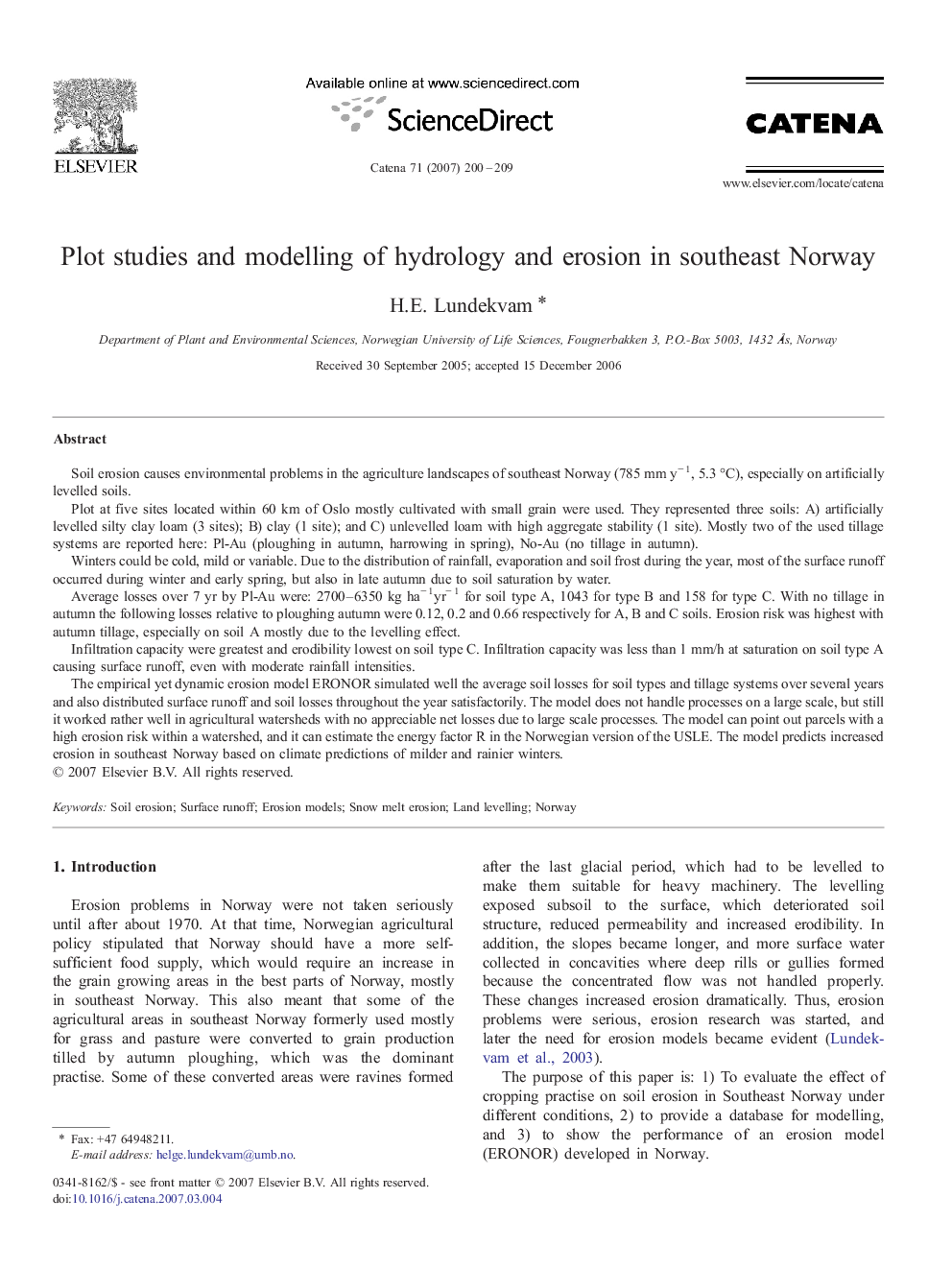| کد مقاله | کد نشریه | سال انتشار | مقاله انگلیسی | نسخه تمام متن |
|---|---|---|---|---|
| 4572545 | 1332184 | 2007 | 10 صفحه PDF | دانلود رایگان |

Soil erosion causes environmental problems in the agriculture landscapes of southeast Norway (785 mm y− 1, 5.3 °C), especially on artificially levelled soils.Plot at five sites located within 60 km of Oslo mostly cultivated with small grain were used. They represented three soils: A) artificially levelled silty clay loam (3 sites); B) clay (1 site); and C) unlevelled loam with high aggregate stability (1 site). Mostly two of the used tillage systems are reported here: Pl-Au (ploughing in autumn, harrowing in spring), No-Au (no tillage in autumn).Winters could be cold, mild or variable. Due to the distribution of rainfall, evaporation and soil frost during the year, most of the surface runoff occurred during winter and early spring, but also in late autumn due to soil saturation by water.Average losses over 7 yr by Pl-Au were: 2700–6350 kg ha− 1yr− 1 for soil type A, 1043 for type B and 158 for type C. With no tillage in autumn the following losses relative to ploughing autumn were 0.12, 0.2 and 0.66 respectively for A, B and C soils. Erosion risk was highest with autumn tillage, especially on soil A mostly due to the levelling effect.Infiltration capacity were greatest and erodibility lowest on soil type C. Infiltration capacity was less than 1 mm/h at saturation on soil type A causing surface runoff, even with moderate rainfall intensities.The empirical yet dynamic erosion model ERONOR simulated well the average soil losses for soil types and tillage systems over several years and also distributed surface runoff and soil losses throughout the year satisfactorily. The model does not handle processes on a large scale, but still it worked rather well in agricultural watersheds with no appreciable net losses due to large scale processes. The model can point out parcels with a high erosion risk within a watershed, and it can estimate the energy factor R in the Norwegian version of the USLE. The model predicts increased erosion in southeast Norway based on climate predictions of milder and rainier winters.
Journal: CATENA - Volume 71, Issue 2, 15 October 2007, Pages 200–209